English Longbow
The History of the English Longbow
The English Longbow or Welsh Longbow was the AK-47 of its day; reliable and powerful, with a quick rate of fire and exceptional range. This weapon would earn its fame from the Hundred Years’ War fought between England and France, in battles such as Crecy (1346), Poitiers (1356), and Agincourt (1415). In this article, we will examine the iconic medieval weapon of England and try to answer some sought-after questions regarding the bow. Why was the English longbow so effective? What was its range and rate of fire? We’ll also look at some historical battles where the English longbow played a crucial role as well as where you can buy an English longbow for yourself.
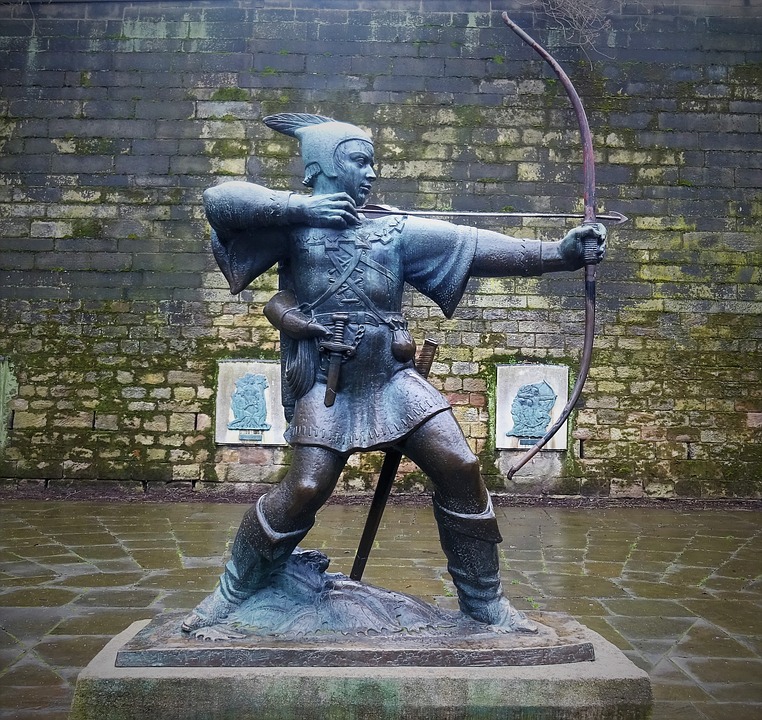
There is some evidence suggesting the Welsh were some first to make tactical use of the Longbow on the British Isles. However, there is also evidence of its use going way back into Neolithic times. A bow dating to approximately 2600 B.C. was discovered in Somerset, yet ironically no English longbows survive from the period of its dominance (c. 1250–1450 AD).
The Normans who would conquer Britain in the 11th century AD also used archers in their armies. The iconic Longbow of the medieval era would evolve to be extremely important to the English military. Shortages of wood required to construct the bows facilitated the importation of raw material from as far as the Levant.
ENGLISH LONGBOWS FOR SALE. CLICK HERE
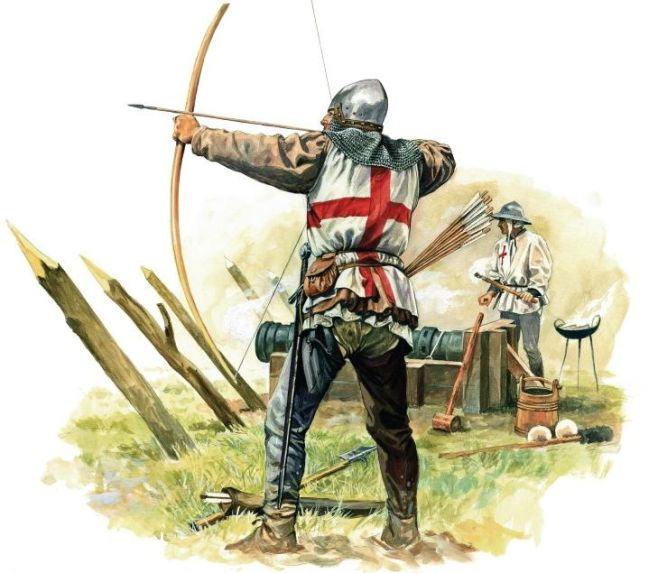
English Longbows Discovered
The most significant archeological find pertaining to the English Longbow came from The Mary Rose, a warship of King Henry VIII which sank on 19 July 1545. The vessel was rediscovered in 1971 and raised in 1982. Onboard were over 3500 arrows, as well as 137 Longbows.
CLICK HERE TO READ MORE ABOUT THE MARY ROSE.
A good video showcasing the Mary Rose Longbows CLICK HERE.

How To Make an English Longbow
The Longbow was typically made from a single branch of yew, but other woods such as ash or elm were used. Traditionally the yew was cured for 1 to 2 years before it was worked into its final form. The wood was formed into a “D” shape, with flat sapwood on the back, while the belly was of heartwood.
For more, check out our article on how to make a bow and arrow by clicking here.

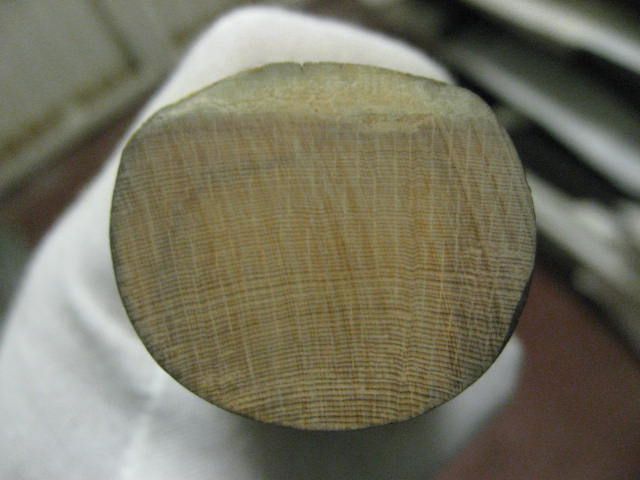
The outer sapwood would resist tension while the inner heartwood would resist compression. The branch fashioned in this manner gave the English longbow great power by utilizing the natural layering of the material of different densities. In order to preserve the bow, wax or resin-coated the finished longbow. The bowstrings are typically made from hemp or silk fibers.
The below video illustrates the manufacture of an English Longbow.
English Longbow Draw Weight
Shooting the longbow with consistency and accuracy takes much practice. Many English kings made it mandatory for able-bodied men of a certain age to practice archery regularly. This was to ensure that in times of war, well-trained and well-practiced archers could be called to arms efficiently. Most archers in medieval England would have possessed considerable upper body strength. Draw weights range anywhere from around 60 pounds to almost 200 pounds for a draw length of approximately 30 inches.
Archer’s skeletons that have been preserved show deformations and enlargements of bones. These stress markers appear on the left arm and right fingers, caused by repeated strain from the use of powerful bows.

English Longbow Range
The range of medieval longbows would vary depending on the individual using the weapon and the bow itself. Modern archers wielding longbows can achieve distances of approximately 350 meters. In Henry VIII’s time, the minimum range for practice was 200 meters. Modern replica longbows made to historic draw weights (100 to 200 pounds) can achieve distances of well over 200 meters. Obviously, the strength, endurance, and experience of the archer come into play when it comes to the range of the English longbow.
English Longbow Rate of Fire
The English Longbow, specifically one with a heavy draw weight, is also called a warbow and could have a rate of fire of about 8 to 10 arrows a minute. Obviously, the strength and/or experience of the archer is a huge factor in determining the rate of fire.
Modern longbow archers who shoot bows with heavy warbow draw-weights (100 pounds and over) can comfortably achieve a rate of 8 arrows a minute in ideal conditions.
Another thing to consider is fatigue. An archer may be able to shoot 10 arrows a minute with a 120-pound warbow, but how long could they keep this up? For how many consecutive minutes could this rate of fire be sustained? Obviously, the heavier the bow, the quicker the archer would fatigue. Their muscles would become saturated in lactic acid rendering them unable to come to full draw. For a more sustained and evenly paced session with a warbow, a rate of fire of 5 or 6 arrows a minute seems reasonable.
Check out this awesome video, which sheds some light on the medieval longbow in action!
English Longbow VS French Crossbow
Which is better, the English longbow or a crossbow? Specifically, a medieval crossbow, possibly used by the French. These two weapons would have existed at the same place and time so it would be interesting to compare the two. They both have their advantages and disadvantages in certain situations and conditions.
The main difference between crossbows and bows is the mechanism for maintaining the weapon when it is at full draw. The energy stored in a bow is maintained at full draw by the body of the archer. A crossbow, on the other hand, maintains the energy stored in its limbs by a mechanical lock.
The crossbow had been developed and widely used in ancient China and archeological evidence of bronze trigger mechanisms has been dated to about 650 B.C.
The first reference to crossbows in Europe comes to us from Ancient Greece as the gastraphetes (Ancient Greek: γαστραφέτης, lit. ‘belly-releaser’). A description comes to us from the 1st century AD by the Greek author Heron of Alexandria in his work Belopoeica.
The Romans also had several crossbow-like siege weapons however no further mentions or references of crossbows appear in Europe from about the 5th century until the 10th century.
It reappeared in France in 947 as a weapon during the siege of Senlis. The crossbow’s popularity superseded hand bows in Europe except in England where the English longbow remained more popular. Why didn’t the English more readily adopt the crossbow? Well, they surely had their reasons. Let us summarize the pros and cons of the medieval and English crossbow.
English Longbow Pros
- Longbows are cheaper to produce than crossbows
- Longbows are simpler and easier to maintain, with no complicated mechanical components
- Greater range, a warbow English longbow could shoot a maximum of about 400 yards
- Greater rate of fire. The skilled longbowman could get off about 8 shots a minute while a crossbow could get off only about 2 shots
Medieval Crossbow Pros
- Minimal training is required. As compared to the English Longbow, which required archers to be trained from early childhood, a soldier could become competent with a crossbow with a few hours of training
- Improved accuracy over a longbow
- Once cocked at full draw, the crossbow could be held in this position, with the crossbowman waiting for the greatest opportunity to unleash his bolt with the greatest effect
- Much more powerful at closer ranges. An English longbow with a 150-pound draw weight was impressive, yet some crossbows had draw weights of well over 300 pounds
The English Longbow in Action!
The English longbow made a name for itself in action, on the battlefields of medieval Europe. This occurred during a lengthy and drawn-out conflict between England and France that came to be known as the Hundred Years War. The English longbow would come to the forefront of several important battles during the war, most notably during Crecy (1346), Poitiers (1356), and Agincourt (1415).
Crecy (1346)
Since the Norman conquest of 1066, the English nobility maintained strong ties to France. Eventually, a series of disputes between Philip VI of France (r. 1328–1350) and Edward III of England (r. 1327–1377) as well as conflict over territories in Normandy (northern France) led to war.
After landing in Normandy in July of 1346, King Edward of England’s armies looted their way through much of northern France entirely unopposed. The French would eventually deploy a scorched earth policy to try and put the squeeze on the English who they knew would eventually be running low on supplies. However, After a series of tactical miscalculations by the French, Edward had evaded immediate pursuit by a much larger army. Establishing a defensive position next to the town of Crecy, the English waited for the French army to arrive.
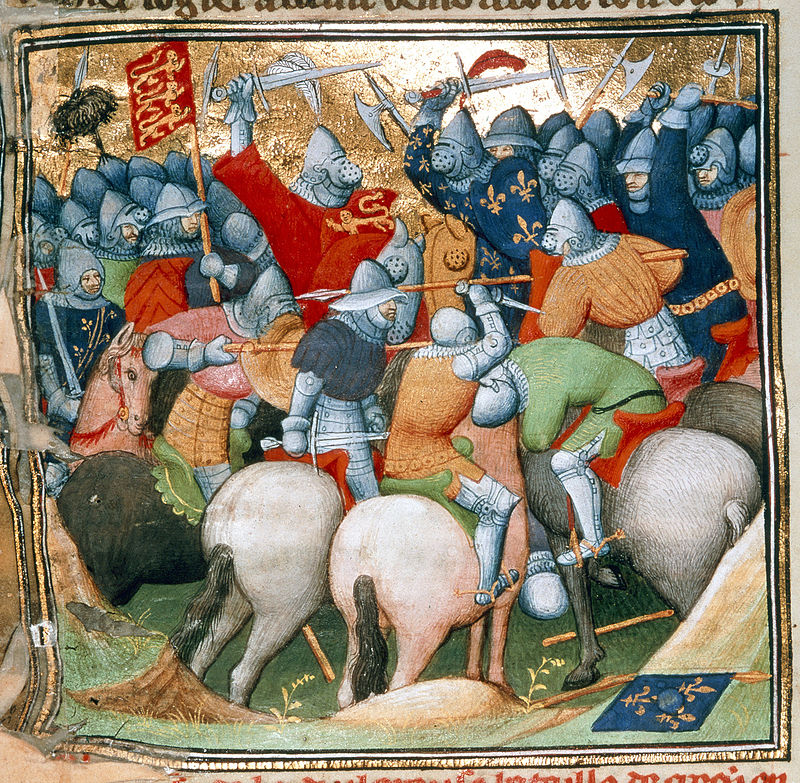
The English Longbow Dominates
Most contemporary sources record that the English were vastly outnumbered. Estimates and records of the exact size of the armies involved vary greatly. Modern historians put the size of the English army between 7,000 to 15,000 men with roughly 5,000 of these being made up of longbowmen.
No records of the exact size of the French army as records of the campaign were lost. All contemporary historians place the size of the French forces as significantly larger than the English one. Estimates range between 70,000 and 120,000 soldiers with roughly 5,000 Mercenary Genoese crossbowmen.
The longbowmen outranged the crossbowmen and were able to keep them at bay. A trained crossbowman at the time could fire roughly 2 bolts per minute. A seasoned longbowman on the other hand could fire three times as many at the same time.
Despite the multitude of cavalry charges by the French knights, they proved ineffective. Casualties were massive on the French side compared to the English. Estimates and records vary but several thousand French likely perished to only a few hundred English. This battle would establish the longbow as a dominant weapon on the medieval battlefield.
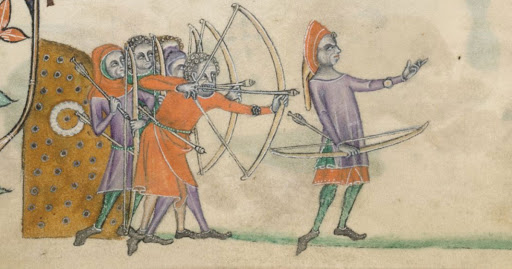
Poitiers (1356)
A mere 10 years after Crecy, the English longbow once again demonstrated its effectiveness at Poitiers. Many of the men-at-arms and archers who fought in Poiters were veterans of the action ten years earlier.
Very much like the battle of Crecy, the Engish were outnumbered by roughly 2 to 1. Placing themselves in optimal elevated positions, English archers keep the cavalry charges of the French from having any real effectiveness as horses are shot out from under knights.
This defeat of the French, with the wound still relatively fresh from just ten years earlier, threw the French realms into chaos.
Agincourt (1415)
English longbowmen, now make up the bulk of King Henry V’s army (roughly 1,500 men-at-arms and 7,000 longbowmen) in the battle of Agincourt in 1415. The French forces numbered approximately 15,000 soldiers, once again outnumbering the English.
The English drove sharpened stakes into the ground facing the enemy. This tactic discouraged any direct engagement by the opposing cavalry.
The scene plays out much like the previous battles mentioned above. Disastrous cavalry charges by the French, a large volume of casualties, and in general a very humiliating and brutal defeat.
Videos Featuring The English Longbow